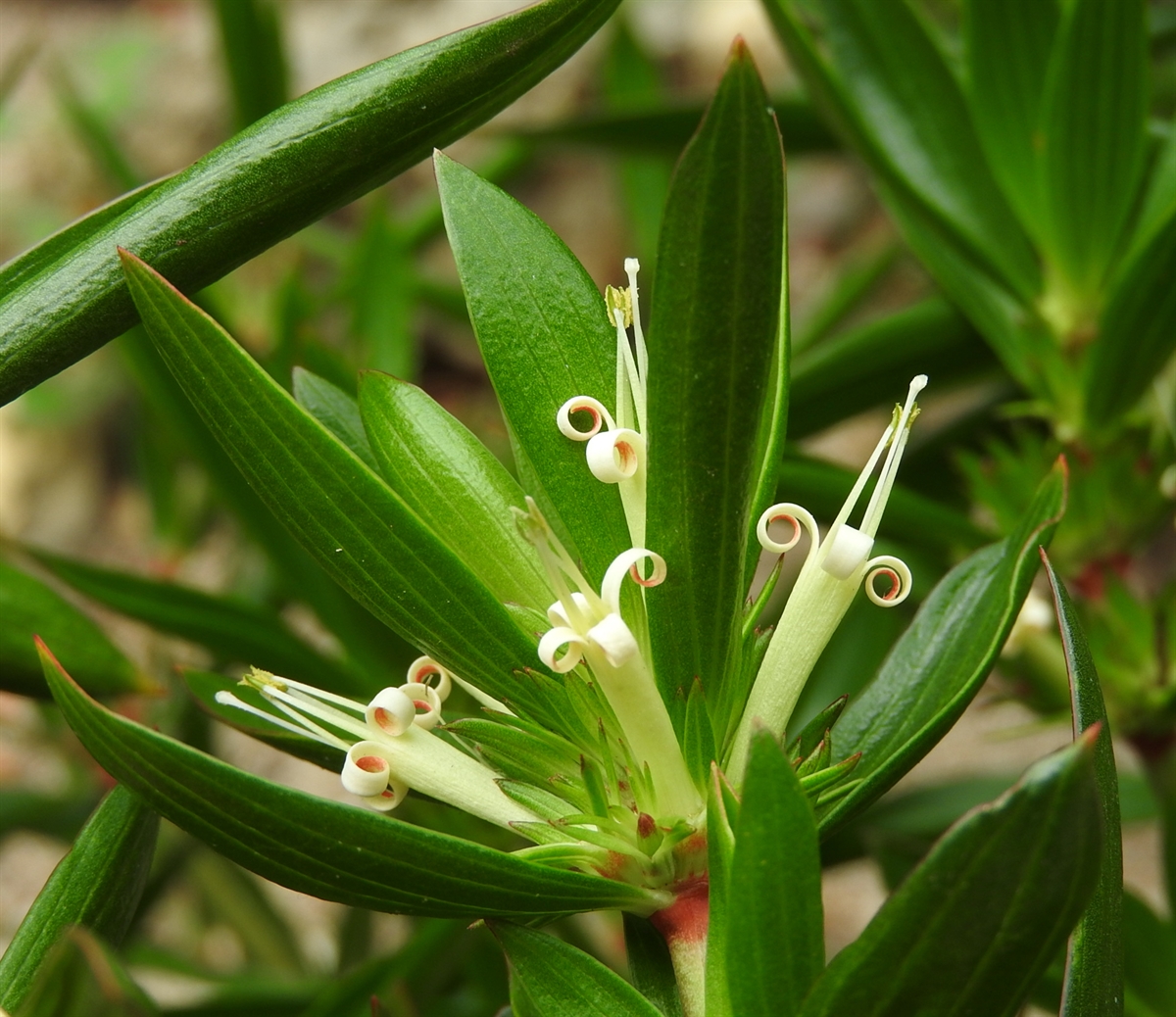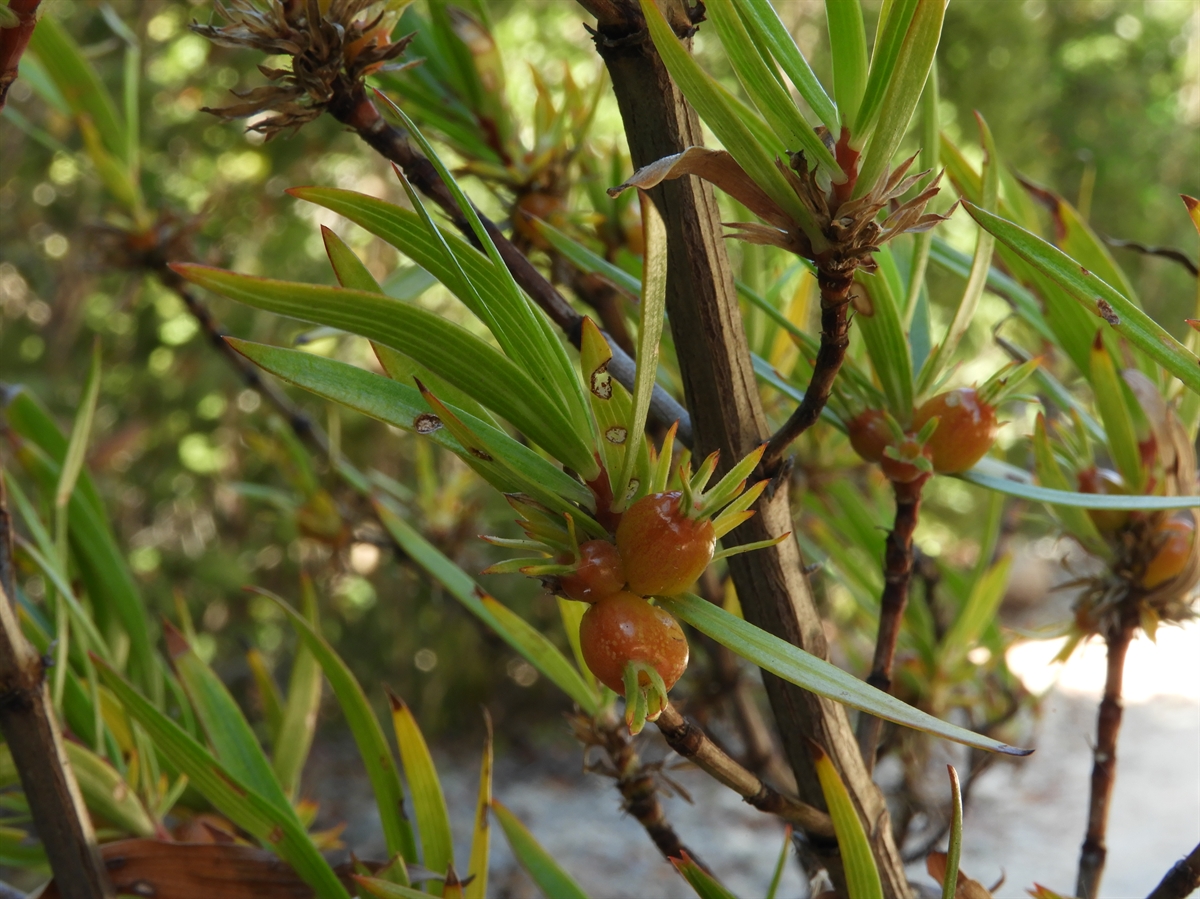Habit: Ernodea gigantea grows as a tall shrub to 2 meter in height with squarish stems. The leaves are arranged oppositely with no petiole and clustered at branch tips, to 8 cm in length, lanceolate with an acute leaf apex and an entire margin. There are 5-7 veins visible.
The complete, perfect, actinomorphic flowers arise in clusters from the leaf axils. The calyx has 4 green unfused sepals. The corolla has 4 fused white, pink, or red petals that form a tube 4-5 times the length of the calyx. There are 4 stamens fused to the mouth of the corolla tube. The ovary is inferior with 2 locules. The fruit is a 1 or 2-seeded drupe/berry that is golden yellow at maturity with the remnants of the calyx longer than the length of the fruit.
It has been reported by Correll and Correll (1982) as having calyx remnants shorter than the size of the fruit but in ex-situ conservations specimens being grown have shown it to be longer than the size of the fruit.
Habitat: Ernodea gigantea grows along the edges of Dry Broadleaf Evergreen Formations – Shrublands (scrub coppice).
Distribution: Ernodea gigantea is a single island endemic known only to occur on Crooked Island.
Medicinal/Cultural/Economic usage: Ernodea gigantea is not known to be used medicinally in the Lucayan Archipelago.
It is designated on the Red list by the International Union for the Conservation of Nature (IUCN) as an Endangered species as its distribution is extremely limited.


